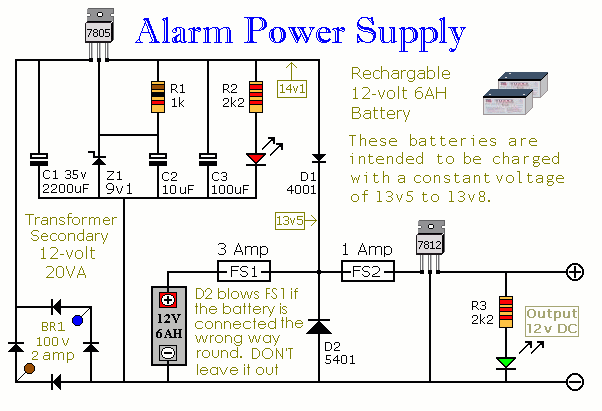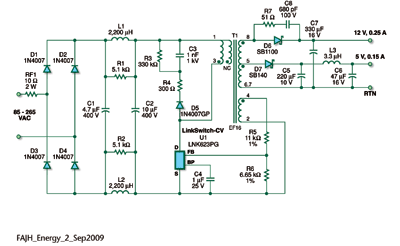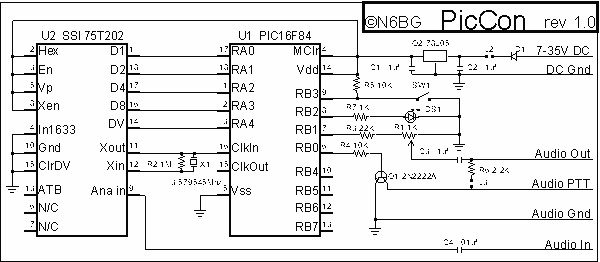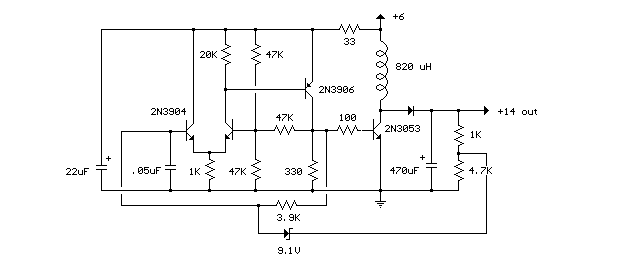
Micro Power AM Broadcast Transmitter
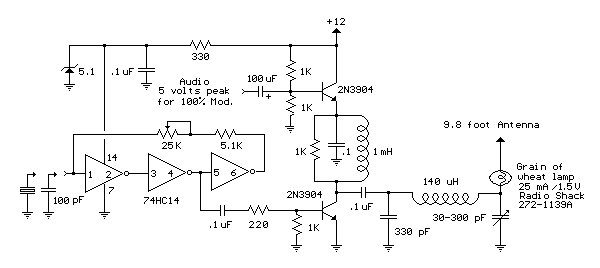
This circuit utilizes a 74HC14 hex Schmitt trigger inverter as a square wave oscillator to drive a small signal transistor configured in a class C amplifier setup. The frequency of the oscillator can be either fixed using a crystal or made adjustable (VFO) through a capacitor/resistor combination. For variable frequency operation, a 100pF capacitor is employed in lieu of the crystal.
The circuit employs the 74HC14, which is a high-speed CMOS hex inverter featuring Schmitt trigger inputs. This component is ideal for generating square wave signals due to its hysteresis characteristics, which provide clean transitions between high and low states, minimizing noise and ensuring stable oscillation.
In the VFO configuration, the 100pF capacitor is connected in parallel with a resistor, forming an RC timing circuit that determines the frequency of oscillation. The frequency can be calculated using the formula f = 1 / (2 * π * R * C), where R is the resistance and C is the capacitance. By varying the resistance, the frequency output can be adjusted to meet specific application requirements.
The output from the 74HC14 is connected to the base of a small signal transistor, which operates in class C mode. In this configuration, the transistor conducts for less than half of the input signal cycle, allowing it to amplify high-frequency signals efficiently. Class C amplifiers are known for their high efficiency, making them suitable for RF applications.
The transistor's collector is connected to a load, which could be an antenna or another stage of amplification. Proper biasing must be applied to the transistor to ensure it operates within the desired parameters. This circuit can be used in various applications, including RF transmitters, signal generators, and other electronic devices requiring square wave oscillation and amplification. Proper layout and component selection are essential to ensure reliable operation and minimize distortion in the output signal.In this circuit, a 74HC14 hex Schmitt trigger inverter is used as a square wave oscillator to drive a small signal transistor in a class C amplifier configuration. The oscillator frequency can be either fixed by a crystal or made adjustable (VFO) with a capacitor/resistor combination.
A 100pF capacitor is used in place of the crystal for VFO operation. Amp.. 🔗 External reference
The circuit employs the 74HC14, which is a high-speed CMOS hex inverter featuring Schmitt trigger inputs. This component is ideal for generating square wave signals due to its hysteresis characteristics, which provide clean transitions between high and low states, minimizing noise and ensuring stable oscillation.
In the VFO configuration, the 100pF capacitor is connected in parallel with a resistor, forming an RC timing circuit that determines the frequency of oscillation. The frequency can be calculated using the formula f = 1 / (2 * π * R * C), where R is the resistance and C is the capacitance. By varying the resistance, the frequency output can be adjusted to meet specific application requirements.
The output from the 74HC14 is connected to the base of a small signal transistor, which operates in class C mode. In this configuration, the transistor conducts for less than half of the input signal cycle, allowing it to amplify high-frequency signals efficiently. Class C amplifiers are known for their high efficiency, making them suitable for RF applications.
The transistor's collector is connected to a load, which could be an antenna or another stage of amplification. Proper biasing must be applied to the transistor to ensure it operates within the desired parameters. This circuit can be used in various applications, including RF transmitters, signal generators, and other electronic devices requiring square wave oscillation and amplification. Proper layout and component selection are essential to ensure reliable operation and minimize distortion in the output signal.In this circuit, a 74HC14 hex Schmitt trigger inverter is used as a square wave oscillator to drive a small signal transistor in a class C amplifier configuration. The oscillator frequency can be either fixed by a crystal or made adjustable (VFO) with a capacitor/resistor combination.
A 100pF capacitor is used in place of the crystal for VFO operation. Amp.. 🔗 External reference
%2BCircuit%2Bdiagram%2Busing%2BCD4047%2Band%2BIRFZ44%2Bpower%2BMOSFET.png)
